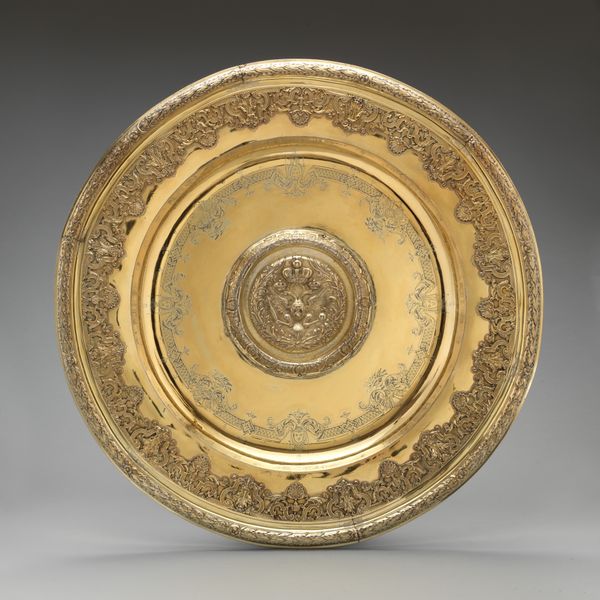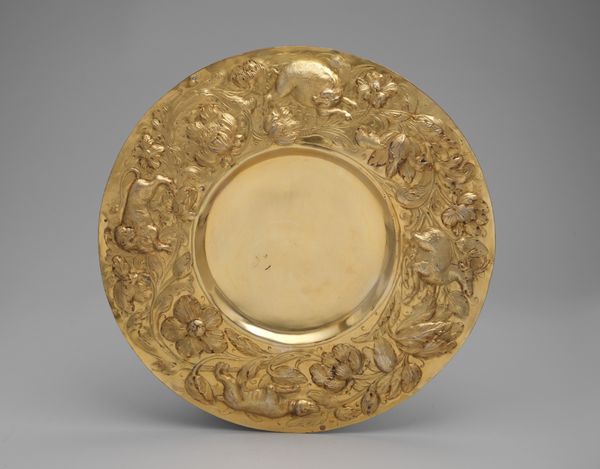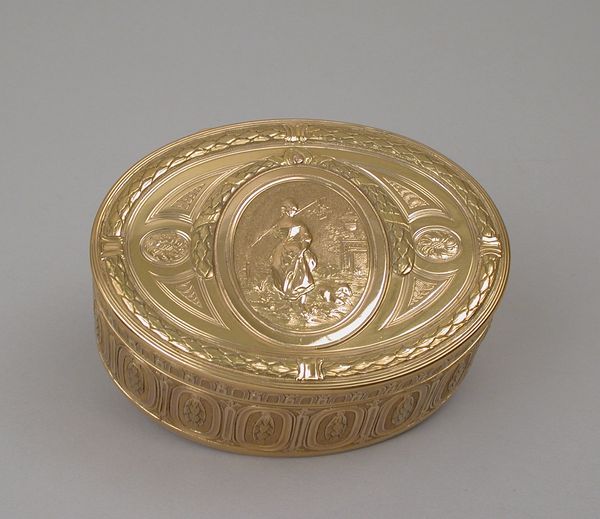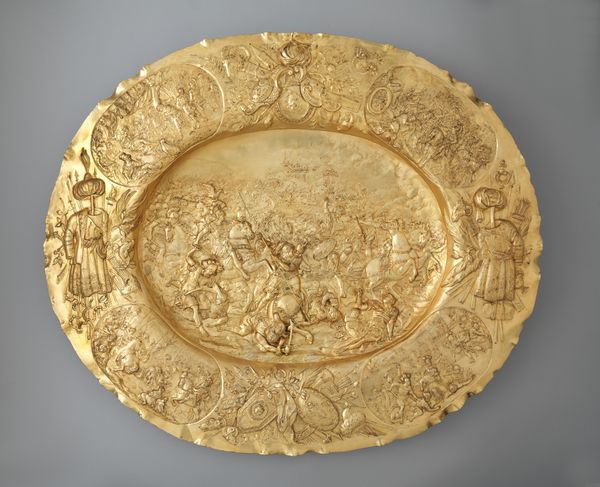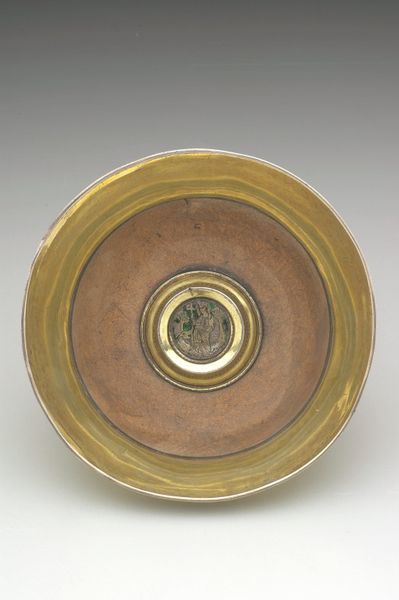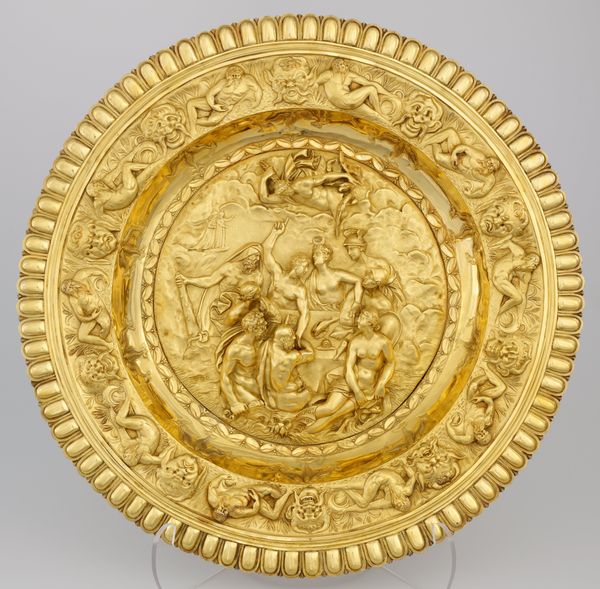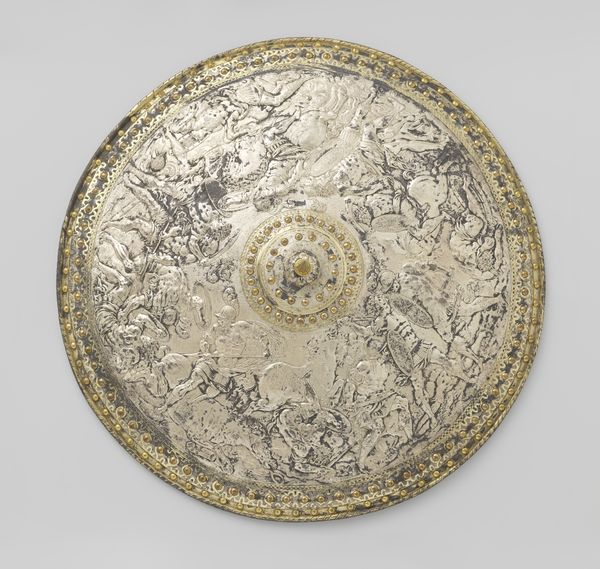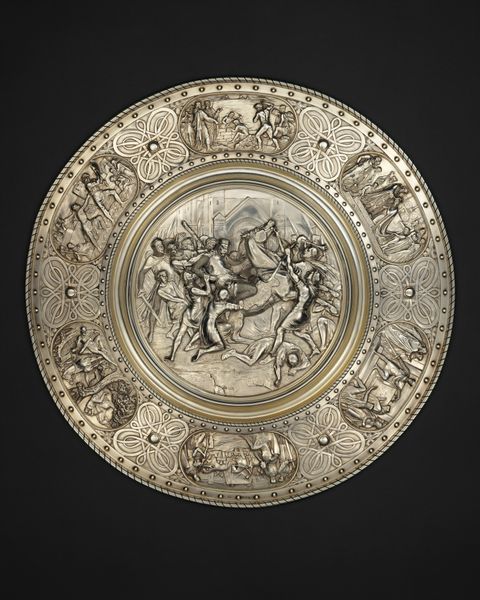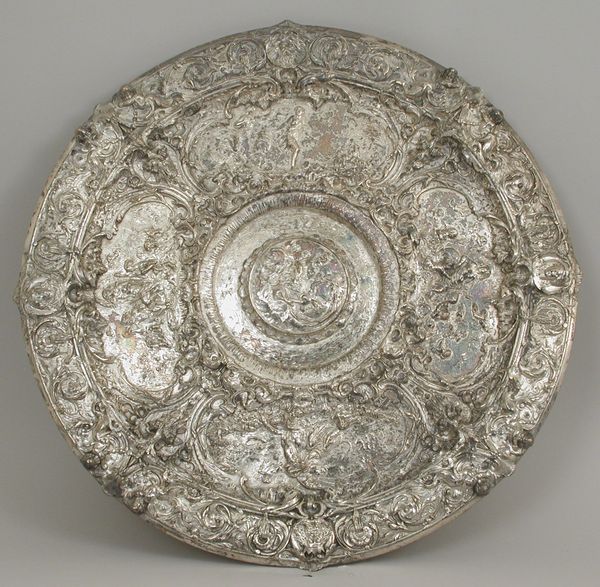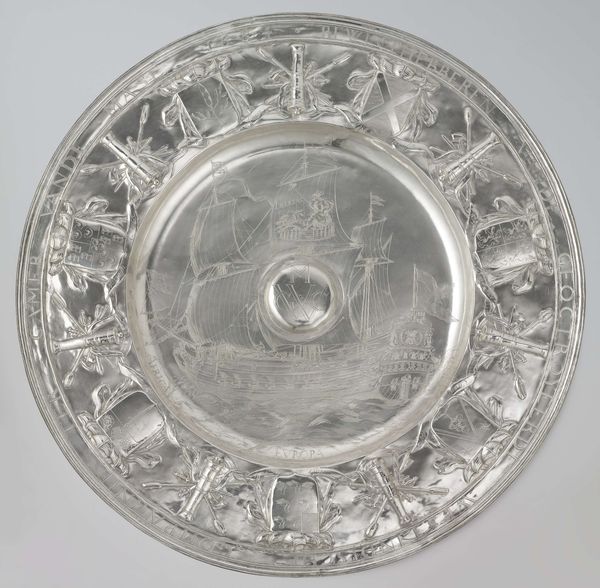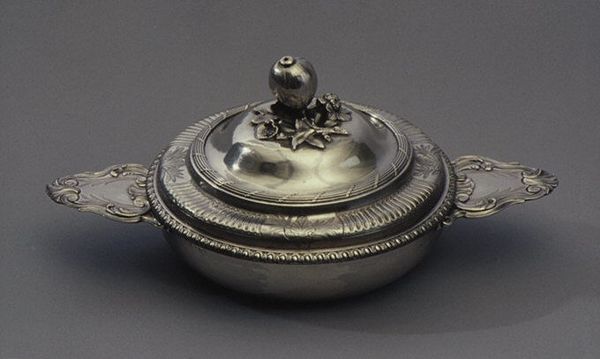
Dimensions: diameter 8.9 cm, height 2.2 cm, weight 257 gr
Copyright: Rijks Museum: Open Domain
Curator: At first glance, it's so ornate and decadent. Almost overwhelmingly gilded! Editor: I'm drawn to the circular composition. The concentric rings create a sense of depth and draw your eye towards the center motif of the anchor and dolphin. Curator: This piece, dated to 1784, is called "Medal Box". It’s believed to be by Johan Werner Gericke, and it’s crafted from gold and brass. Consider its original function, this isn't simply a pretty object. Editor: You're right. Beyond the purely aesthetic value, a medal box would have been a potent symbol. It likely held commemorative medals signifying military victories or civic achievements—tangible embodiments of power and status. The artistry of the box elevates these symbolic items, making them treasures within treasures. Curator: The box is adorned with floral Baroque details and what looks like miniature embellishments all around the lid. But it would be naive to view this work solely through the lens of beauty. We must acknowledge its participation in a system of power and privilege. The acquisition of such luxurious objects contributed to an elite’s self-representation. Editor: Exactly! This is where art history must meet with contemporary theories about wealth. What narratives did the medals tell? Who was excluded from those stories? The dolphin motif, so whimsical, becomes charged with questions of colonial trade and resource exploitation. Who are those dolphin resources benefitting and what histories get left out? Curator: That’s the challenge, isn’t it? Acknowledging that even within beautiful art, there is still socio-political messaging, still agendas being promoted. The miniature scale also brings an intimate dimension—who was permitted to hold this box, to examine its detail up close? Editor: The scale underscores the sense of possession, the exclusive privilege of accessing not just the material wealth but the ideologies embedded within. It’s a conversation starter. A point of intervention in those inherited historical power structures. It allows me to connect across histories. Curator: Precisely. The value lies not just in what it is but also in what it evokes. Editor: Definitely—a conversation about power, about value, about whose stories get told, is embedded into it. It encourages dialogue between the present and the past.
Comments
rijksmuseum about 2 years ago
⋮
With the conclusion of the peace treaty of 1784, the French vice-admiral Pierre André de Suffren de Saint-Tropez was honoured as a hero by France and the Netherlands. The Dutch East India Company (VOC) presented him with this box containing a gold medal. Thanks to De Suffren, the Dutch colonies in Africa and Asia had not fallen into British hands.
Join the conversation
Join millions of artists and users on Artera today and experience the ultimate creative platform.
